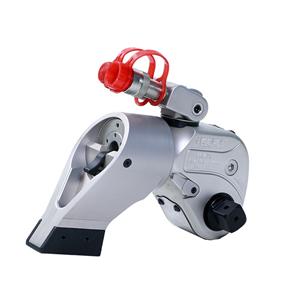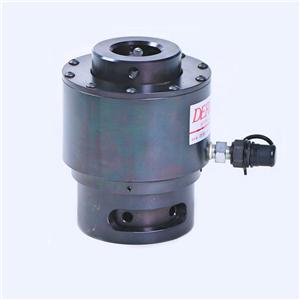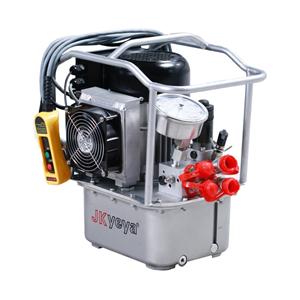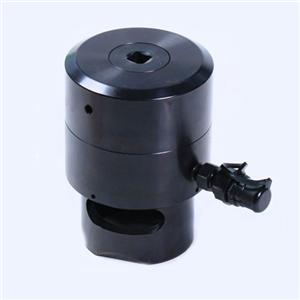How To Use a Torque Wrench Tester?
A torque tester is a device used to measure and evaluate torque. It is a precision instrument utilized for detecting, testing, and calibrating various torques in different torque tools, including electric, pneumatic, hydraulic, and manual torque tools.
Based on the operational state of the instrument's sensor, Torque Testers are categorized into Dynamic Torque Testers and Static Torque Testers.
Dynamic Torque Testers are well-suited for applications requiring real-time monitoring and recording of torque changes. Static Torque Testers are suitable for applications where a stable torque needs to be maintained over an extended period.
In this article, TorcStark will primarily focus on Static Torque Testers' usage methods and precautions.
1. How to Use a Torque Tester:
1.1 Select the Appropriate Torque Tester:
Choose a torque tester that suits your needs based on the required torque range, accuracy, and application environment. Different models and specifications of torque testers have distinct features, so choose one according to your specific requirements.
1.2 Connect the Test Piece:
Connect the bolt, nut, or other connecting components to the torque tester. Ensure a secure and tight connection to avoid any looseness that might affect the accuracy of the measurement.
1.3 Set the Torque Value:
Set the desired torque value as per the requirements. Torque testers typically have the functionality to adjust torque values, and this can be done through knobs, buttons, or a touchscreen interface.
1.4 Perform the Measurement:
Hold the torque tester vertically and rotate it to apply the required torque. Maintain a stable and uniform rotation speed to ensure the accuracy of the measurement.
1.5 Record the Measurement Results:
After completing the measurement, record the measured torque value. Torque testers usually come with a display screen or data storage capability, enabling direct viewing and saving measurement results.
1.6 Calibration and Maintenance:
Regular torque tester calibration and maintenance are crucial steps to ensure measurement accuracy and equipment stability. Follow the calibration procedures and maintenance guidelines provided by the manufacturer.
1.7 Example: Using a Hydraulic Torque Wrench Torque Tester
1.7.1 Preparation:
Firstly, place the hydraulic torque wrench calibration tool on a stable workbench and ensure it is connected to the power supply.
1.7.2 Turn on the Power:
Switch on the power, and the display screen of the hydraulic torque wrench calibration tool will illuminate.
1.7.3 Connect the Hydraulic Torque Wrench:
Align the interface of the hydraulic torque wrench with the calibration tool's interface and ensure a secure connection.
1.7.4 Set Parameters:
Based on the model and specifications of the hydraulic torque wrench, set the corresponding parameters, such as torque values and angle values, through the control panel of the calibration tool.
1.7.5 Start the Test:
Press the start button on the hydraulic torque wrench calibration tool, and the hydraulic torque wrench will begin the test. During the test, the calibration tool will display real-time torque values and angle values, comparing them with the set values.
1.7.6 Result Assessment:
Based on the display results of the hydraulic torque wrench calibration tool, assess whether the hydraulic torque wrench is operating normally. If the torque and angle values match the set values, the hydraulic torque wrench is functioning correctly; if not, there may be a malfunction or a need for adjustment.
1.7.7 End the Test:
After completing the test, press the stop button on the hydraulic torque wrench calibration tool, and the hydraulic torque wrench will cease operation. Then, detach the hydraulic torque wrench from the calibration tool.
1.7.8 Turn off the Power:
Switch off the power, and the display screen of the hydraulic torque wrench calibration tool will turn off.
2. Precautions for Using a Torque Tester:
2.1 Understand Torque Specifications:
Before using the torque tester, it's essential to understand the torque specifications of the connection to be tested. Ensure that the selected torque tester can cover and adapt to the specified torque range.
2.2 Properly Install the Test Piece:
When connecting the test piece, ensure that bolts, nuts, or other connecting components are properly and securely connected to the torque tester to avoid loosening or misalignment.
2.3 Maintain Stable Operation:
During measurements, maintain a stable and uniform rotation speed. Rapid or unstable operations may result in inaccurate measurement results.
2.4 Avoid Overloading:
Do not exceed the rated torque range of the torque tester during testing to avoid equipment damage or unsafe conditions.
2.5 Calibration and Maintenance:
Regularly calibrate and maintain the torque tester to ensure measurement accuracy and equipment stability. Follow the guidelines provided by the manufacturer to avoid errors or inaccurate measurement results due to improper calibration.
2.6 Avoid Overload and Vibration:
Avoid exposing the torque tester to excessive torque loads to prevent equipment damage. Additionally, try to avoid using the torque tester in vibrating or impactful environments, as this may affect measurement accuracy.
2.7 Pay Attention to Environmental Conditions:
When using the torque tester, consider environmental factors such as temperature, humidity, and others that may affect measurement results. Ensure a stable and suitable working environment for accurate torque measurements.
2.8 Proper Storage and Transportation:
When not in use, store the torque tester properly, avoiding impact or other physical damage. When transporting the torque tester, take appropriate protective measures to prevent damage.
2.9 Training and Operating Guidelines:
Before using the torque tester, it is recommended to undergo relevant training and become familiar with the equipment's operating guidelines. Proper operation and usage methods can enhance measurement accuracy and ensure safe use.
2.10 Ensure Personal Safety:
When using the torque tester, pay attention to personal safety. Avoid contact with rotating parts with fingers or other objects to prevent accidental injuries.
3. In The End
By correctly using the torque tester and adhering to the precautions, you can ensure the accuracy and reliability of measurement results. TorcStark has extensive experience in using torque testers, and if you encounter any issues during the usage, please feel free to contact us. We will provide personalized service and support.




